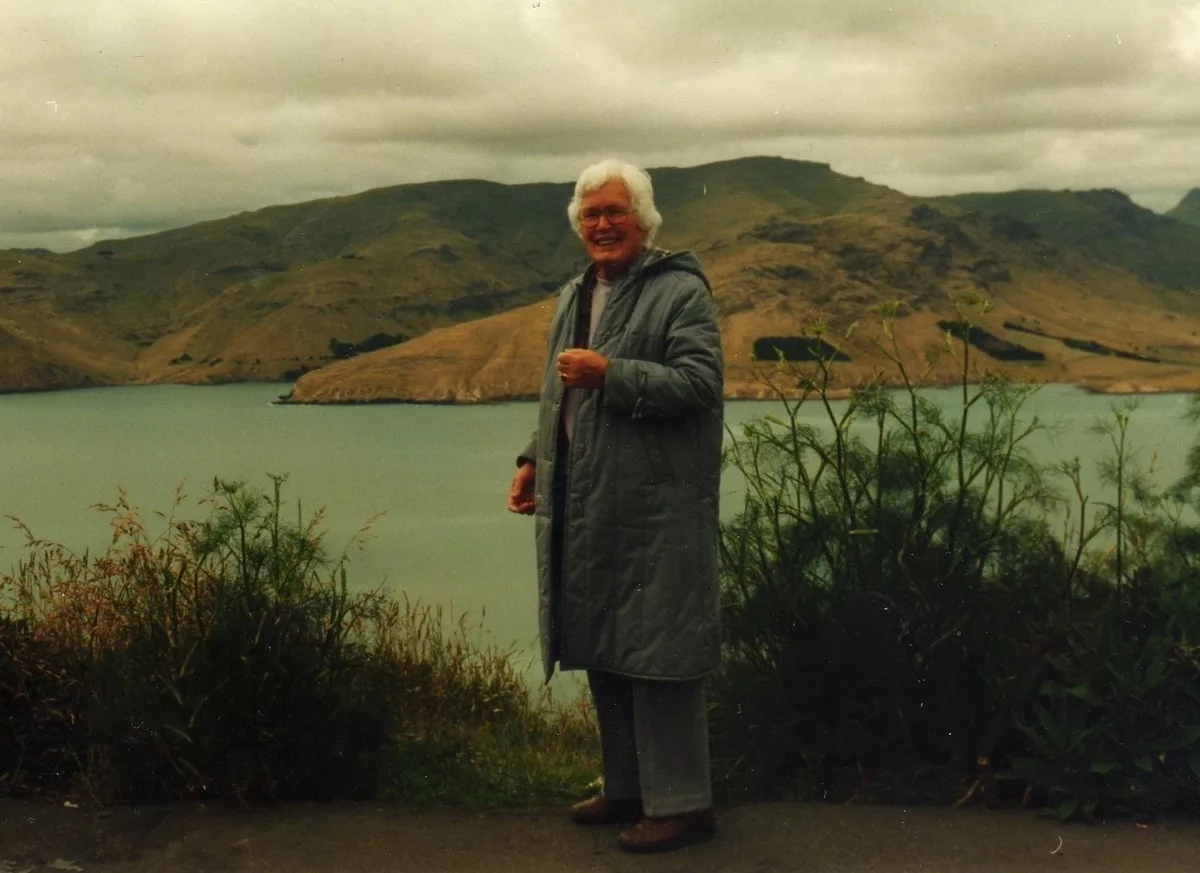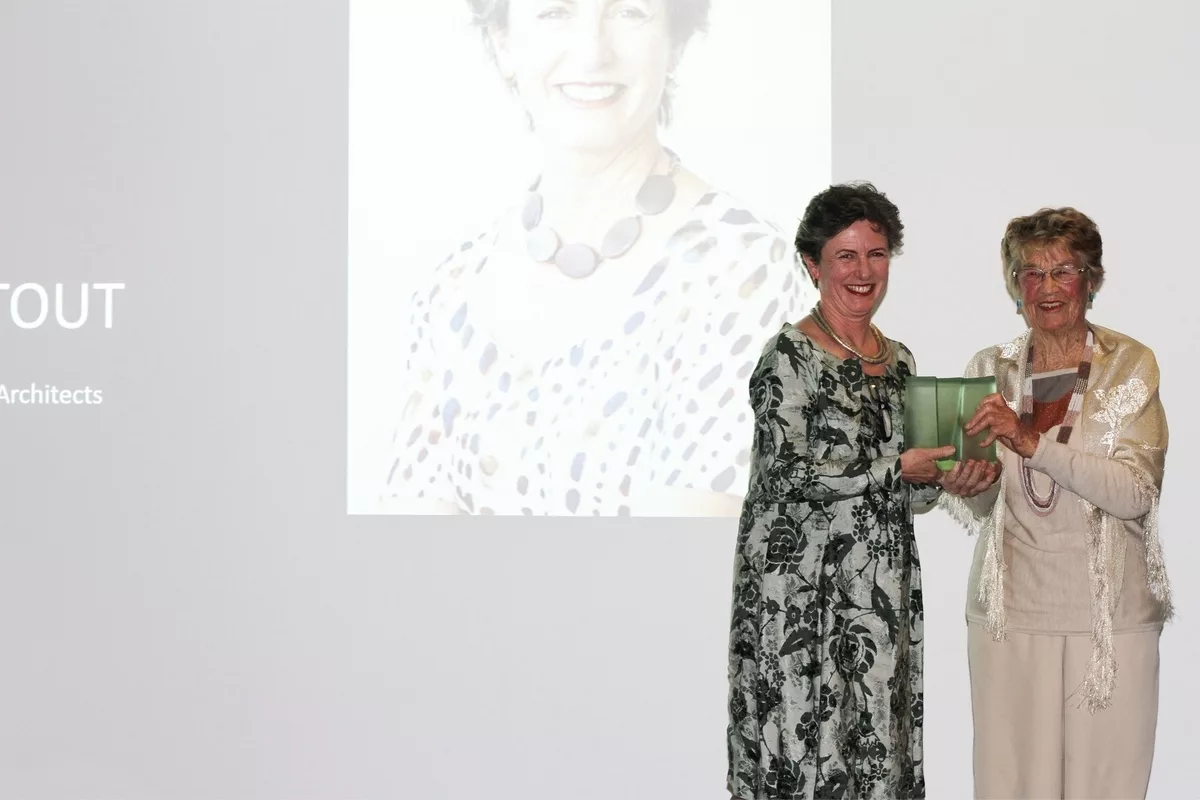The Awards are named for women who have had a considerable influence on New Zealand architecture.
Wirihana Leadership Award
Moana Wirihana, for whom the Leadership Award is named, was a respected community leader who contributed to architecture through her involvement in several significant whare nui and community projects.
From 1986 until 1992, Sarah Treadwell ran a course at the Architecture School at The University of Auckland titled Women and Architecture. The course was designed to build awareness of contemporary and past women involved in architecture, initially worldwide and in the later years with a focus on New Zealand. The seminar course ensured that each piece of research contributed to collective knowledge around a growing history of New Zealand women architects, and these projects have become an interesting and valuable source of information for researchers today.
One project in 1987, by Saul Roberts (Te Kawerau-a-Maki, Waiohua, Waikato), was a transcript of an interview with Moana Wirihana (Te Kawerau-a-Maki), a kuia connected to his whanau. While Wirihana was not an architect, Saul presented a compelling argument for her inclusion in the field of this Women and Architecture study, effectively writing Maori women, not only her, into our history of architecture. He described how her influence, respected opinion and strong leadership had been wide-ranging in the design and construction of several whare nui, especially relevant to New Zealand’s history. This award pays homage to Moana Wirihana by naming the Emerging Leadership Award after her, and in doing so, respectfully reveals an entire thread of history that is consistently omitted from the canon of New Zealand architecture.
The naming of this award also acknowledges the huge and positive impact that Sarah Treadwell has had on our emerging leaders through her role in the education of our future architects and thinkers.
Munro Diversity Award
Margaret Munro, for whom the Diversity Award is named, had a long and distinguished career as an architect in Christchurch.
Margaret Munro’s lifelong career in architecture began with a passing comment on one of her childhood drawings. The admirer was Christchurch architect Cecil Wood who provided Munro with her first place of employment, where she worked her way up from general office dogsbody to doing fine planning and detailing of his designs, alongside architects Paul Pascoe, Gerald Bucknell and Robert (Bob) Munro, whom she later married.
It was the 1930’s and Munro was dissuaded against entering into formal architectural studies. “Cecil was a man who thought girls should have a lovely social life and look pretty. He felt I would be wasting the best years of my life if I bothered about exams”. Munro instead complimented her work in Wood’s office with classes at the Canterbury College School of Fine Arts, later becoming secretary of the Architectural Students Association. In 1945, Bob and Margaret left Wood’s practice, setting up in partnership. While their work was collaborative, Bob was the qualified architect, so the practice and designs went under his name.
Following Bob’s death in 1959, Margaret was encouraged to apply to the NZIA for registration, and in 1960, after 29 years in the profession, Margaret Munro was finally able to call herself an architect. Munro continued to practice up until her retirement in 1975. “I set up as Mrs Margaret S. Munro ANZIA, with the Mrs in very small print”.
Her reputation for a traditional approach to design, reliability, and attention to detail ensured steady commissions. Her work includes the cricket pavilion and Burnett Block at St Andrew’s College, the McSkimming Industries office building on Tuam St and many houses. “Once you are an architect, I don’t think you ever stop being one.”
Chrystall Excellence Award
Lillian Chrystall, who has lent her name to the Excellence Award, practiced architecture continuously for 60 years, initially in London and Paris, and in Auckland from the 1950s to 2012.
A graduate of Architecture from the University College of Auckland and Fellow of the NZIA, Lillian has practiced almost continuously for six decades while bringing up three children alongside her architect husband and partner in practice, David Chrystall. Following graduation in 1948, Lillian worked for a brief period in Wellington before a return to Auckland to teach second year as part of Vernon Brown’s studio – the first woman on the teaching staff. Two years later, she travelled to Europe, working first with Hungarian Erno Goldfinger, mostly on post-war reconstruction work in London, followed by a position with Andre Sive in Paris.
Lillian returned to New Zealand in her late twenties, immediately starting her own practice, Lillian Laidlaw Architect. Her first employee being David Chrystall who she later married, setting up partnership with Chrystall Architects in 1958. Their house on Airedale Street was a short five-minute walk from their Symonds Street studio and became a gathering place for a lively clan of architects.
David Mitchell, then a second-year architecture student, answered their ad for a babysitter and ended up working in the office - “the scene around their dining table was a real blast”. Her partnership with David was a successful one. Chrystall Architects work ranged across commercial, education and residential with Lillian gaining an NZIA National Bronze Medal for the Yock House, Remuera in 1967. “The house is a brilliant essay in assured simplicity. It succeeds without affectation, but with tremendous subtlety and sensitivity… direct and elegant detailing in NZ terms. A difficult site intertwined to advantage by form and placing of the house and superbly controlled landscaping”. In the 1980s, after 25 years working together, Lillian commented, “Had we worked on the same designs, it would have been intolerable. But we didn’t. We each have our own work”.
As a long-time city dweller, Lillian was an urban advocate along with Bill Wilson & Co. for pedestrian-friendly space in Kartoum Place and Vulcan Lane. While a reluctant star, Lillian had undoubtedly generated a significant body of work, influenced many and contributed to the NZIA and city environment in both a pragmatic and uncontroversial manner.
With her retirement in 2012, following a 64-year career, Lillian was one of New Zealand’s most enduring and talented practitioners. In conversation with Lindley Naismith in 2004, Lillian said her greatest reward was to be found in a client’s expression of pleasure, sometimes many years later, in what she had done. “It’s still exciting to come to work every Monday, and I regret going home at weekends to clean the house”.






